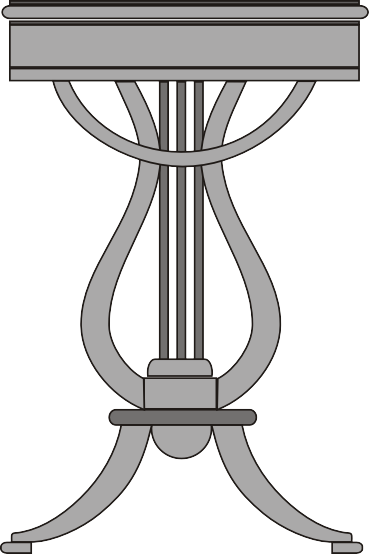
SECRETARY DESKS / WRITING FURNITURE
Please note that the original color tones of the wood/furniture may vary due to different lighting conditions
when photographing and due to different monitor settings!
Lyra Secretaire Vienna 1810/15

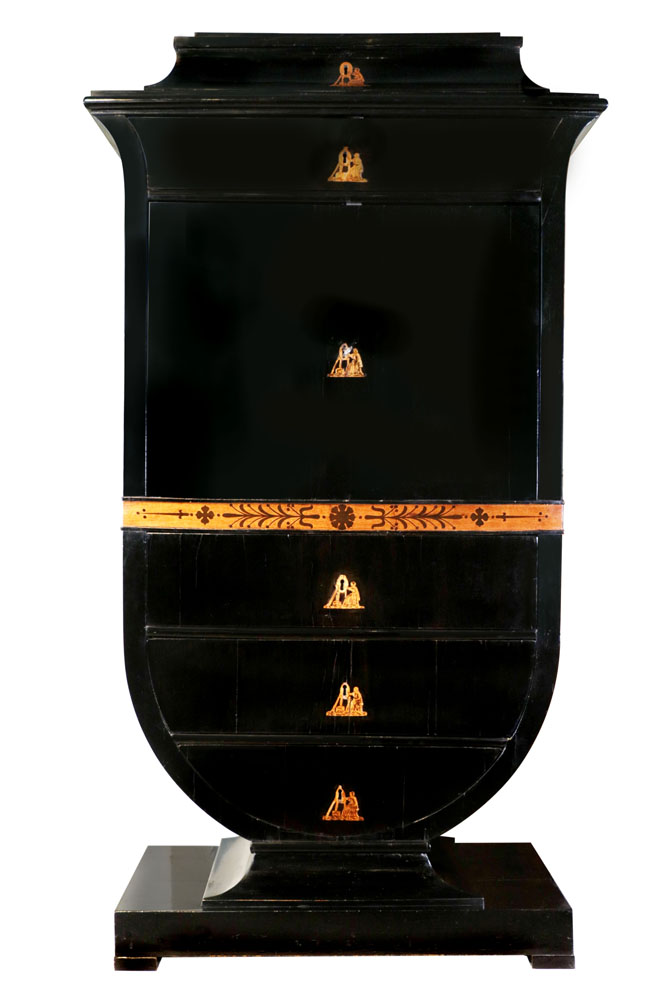

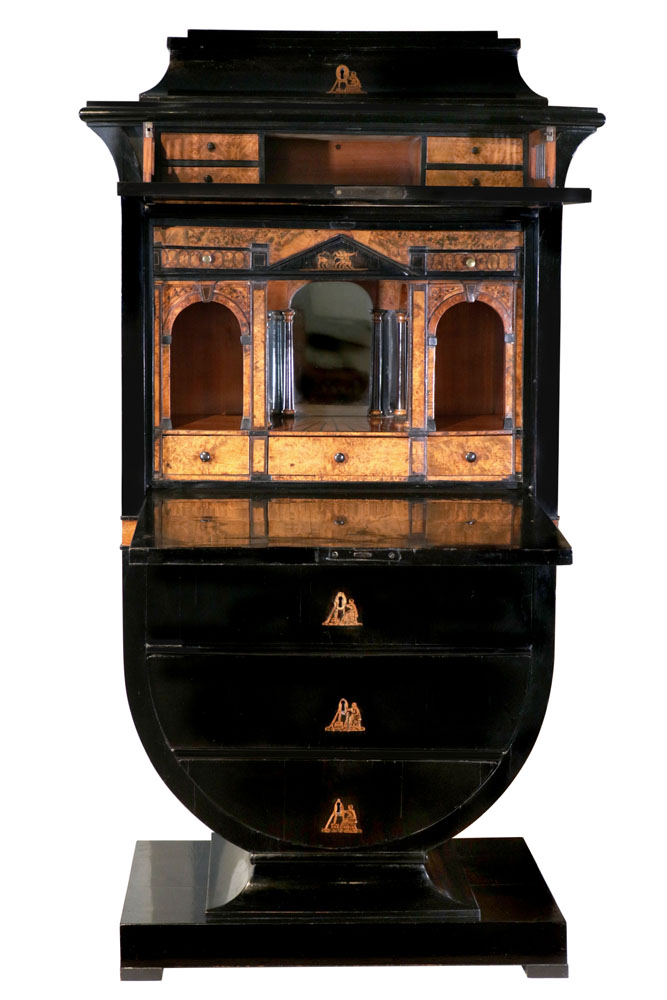
Exceptionally beautiful and rare lyre Secretaire, Vienna around 1810/15, probably Danhauser
Hardwood and softwood body veneered throughout with ebonized pear veneer, the lyre-shaped design tapering downwards on a single-layered plinth with flat block feet. Hinged lower writing surface with a finely inlaid maple band in floral decoration in the lower section. Interior with three lower and two upper finely rootwood-veneered drawers. Open-worked galleries, with an ebonized top and a maple-inlaid figural depiction on the inside of the central inner surface of the pointed gable.
Sliding base plate in burlwood veneer at the bottom, the inner base plate is inlaid in ebonized wood with geometric patterns. The original writing tablet is fully ebonized and without a writing inlay.
The pointed gable of the interior, also ebonized, has figural maple inlays.
Instead of fittings, the key plates on the entire piece of furniture are decorated with filigree maple inlays, partly seated and partly as fighting human figures. The inner upper pediment thus depicts human beings as warriors or gladiators with short swords or daggers fighting a lion.
In the upper section of the writing desk there is a slide-out panel that allows the desk to be converted into a standing desk.
Dimensions:
Height: 154 cm
Width: 84 cm
Depth: 45.5 cm
Item no.: 2438
About the inlaid key plates: This is probably a depiction of mythical content; lion hunters are depicted in the pediment of the interior as a metaphor for the greatest of all threats to life, death. This can be overcome through a virtuous life, just as a brave hunter conquers the lion. Lion conquerors are one of the oldest pictorial motifs of all, dating back in part to Homer. The lion also played an important role in early Christian times. In some contexts, the lion can also have negative connotations, as in the biblical statement that the devil "walks about like a roaring lion, seeking whom he may devour". Here, the lion symbolizes danger, destruction and sin.
This could well be connected to the Napoleonic Wars in our furniture and serve as a symbol of Napoleon's superiority.
Standing desks were popular in the Goethe era and the early Biedermeier period for a combination of health, practical, ethical and symbolic reasons. They reflected the views of health, work and efficiency of the time. ...
... The diversity of early Viennese Biedermeier furniture was based on a longer development that had already begun in Vienna in the 80-90s of the 18th century with early modern furniture designs and continued in a great variety at the beginning of the 19th century.
In contrast to the Empire, the Biedermeier period deliberately dispensed with expensive and luxurious fire-gilded fittings, reduced itself to a surface effect and used inlaid or painted ornaments such as palmettes, medallions, but also grotesque figures and figural depictions of people and animals in the early phase. Such inlaid human and animal figures can also be found on our early Lyra Secretaire, which in its rare, seemingly purist adherence to these principles - a complete and strict renunciation of metal fittings - must be regarded as an art and cultural-historically significant and valuable testimony to this rather short development of Biedermeier furniture.
Provenance: Important European collection of an industrialist family
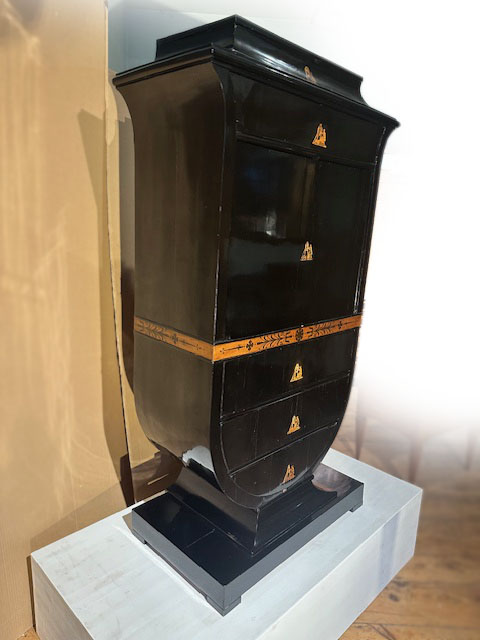

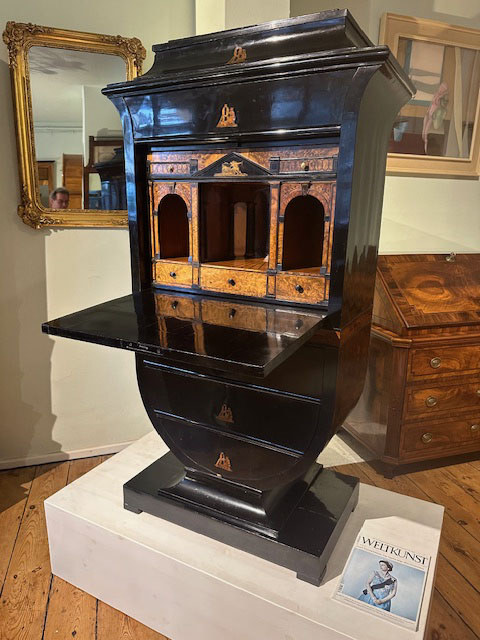
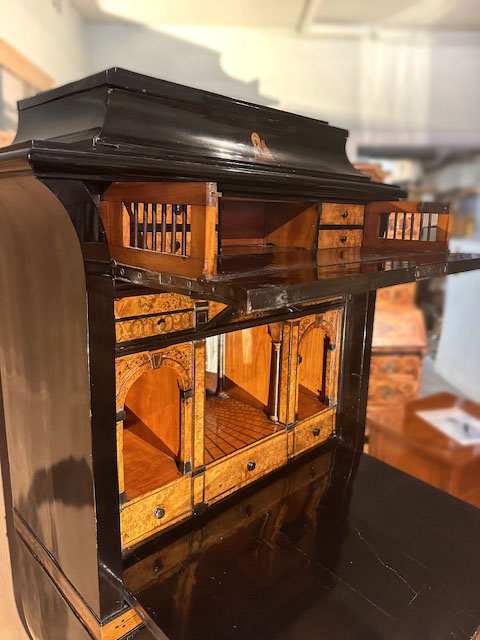
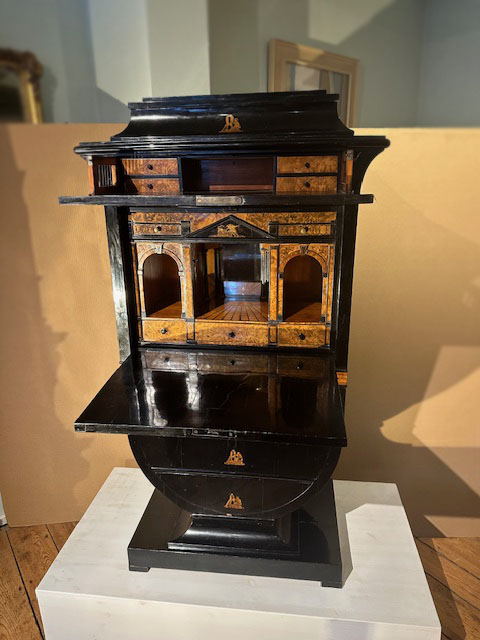

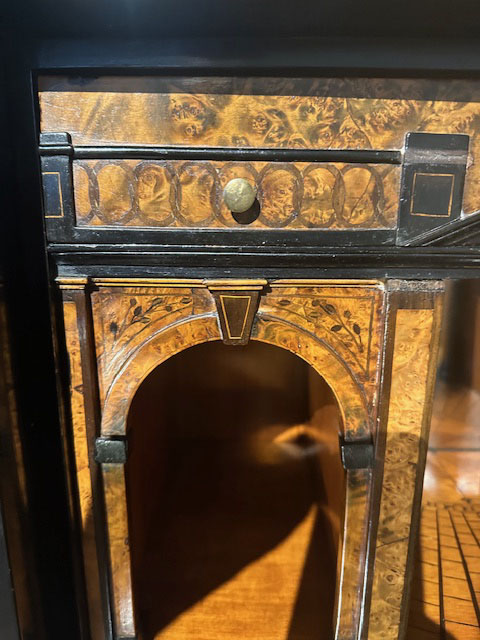

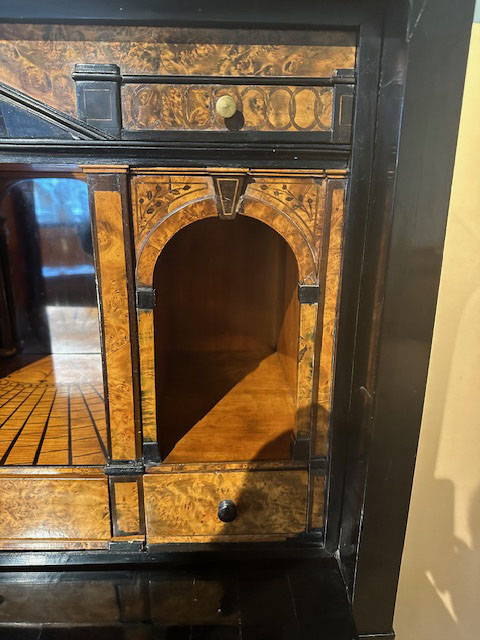
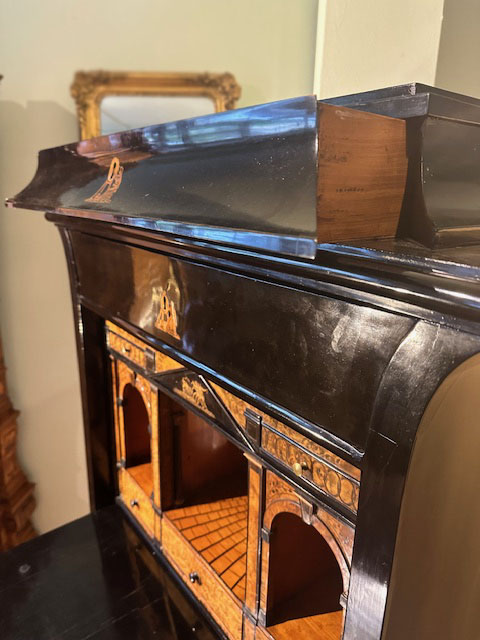
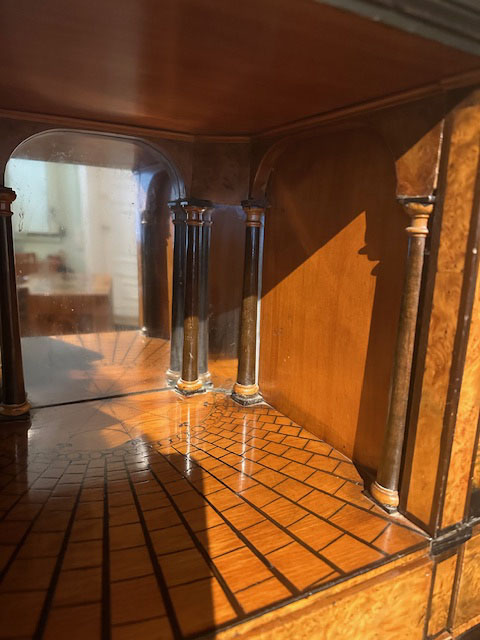
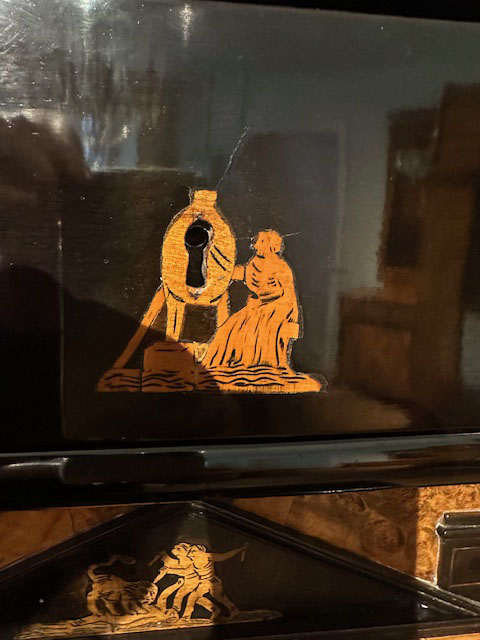


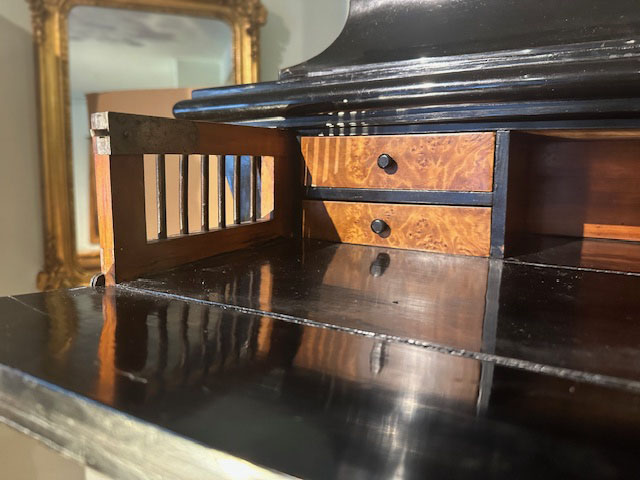
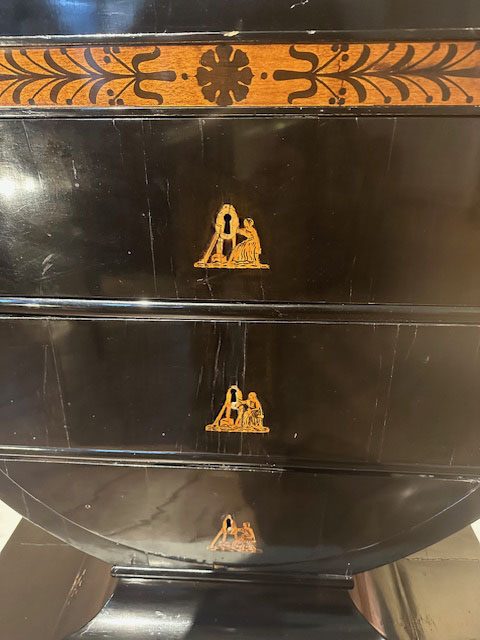

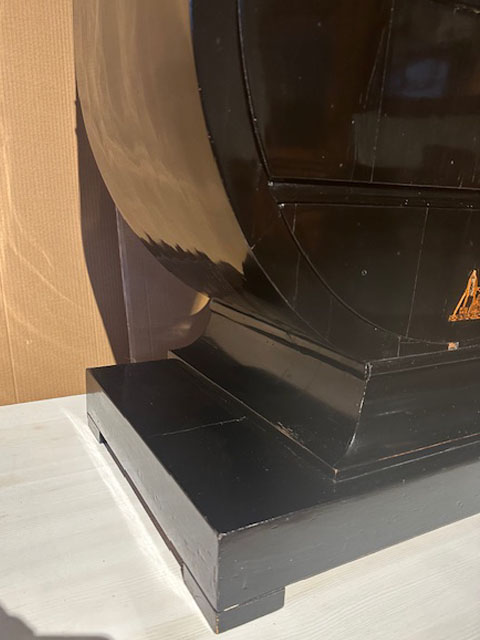
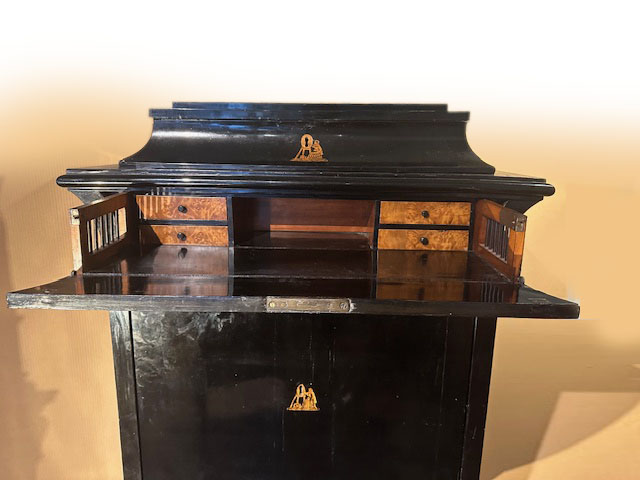
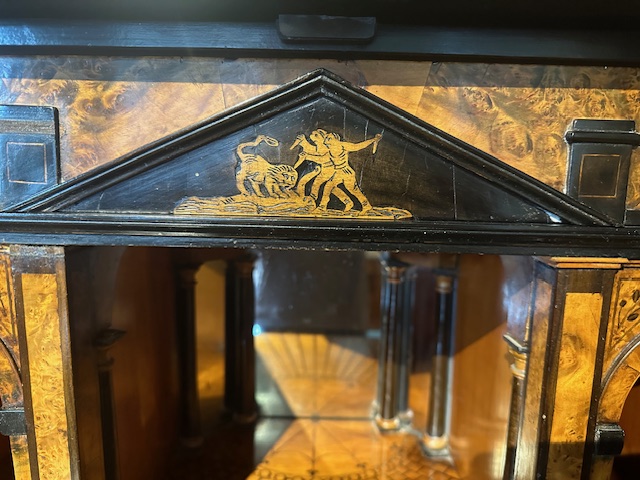
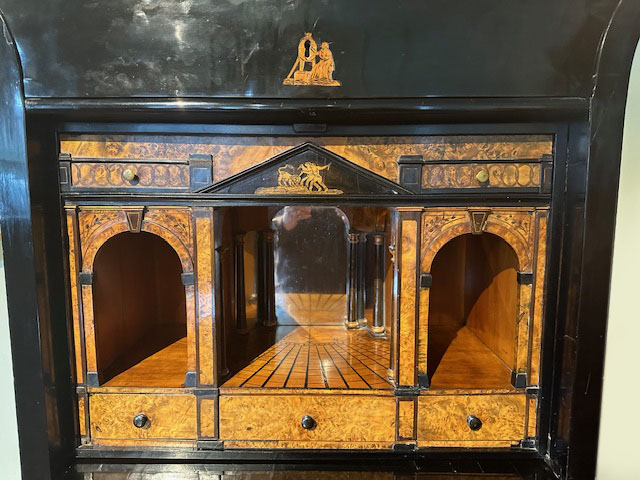
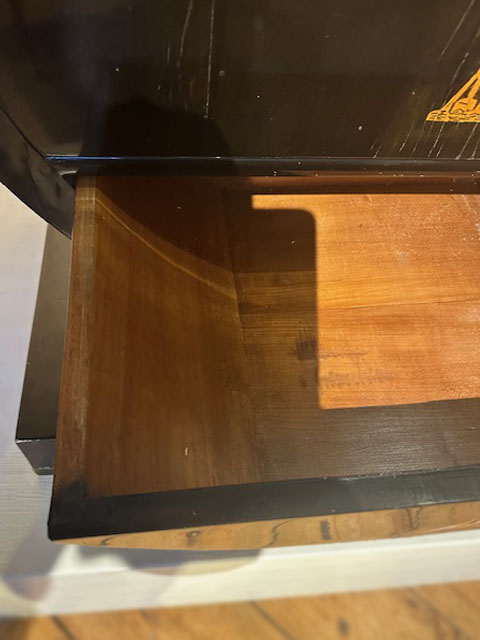

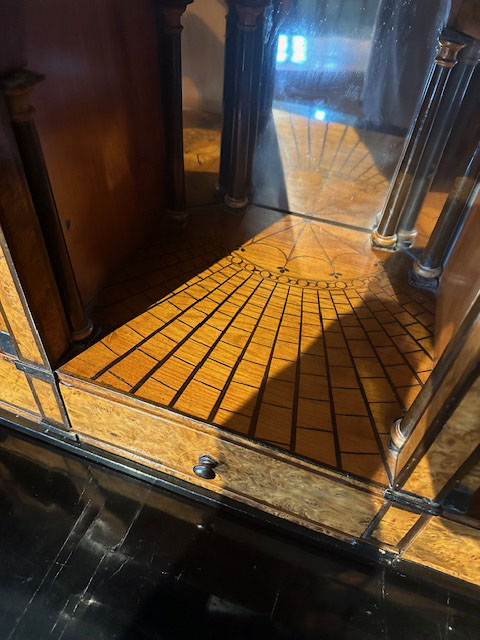
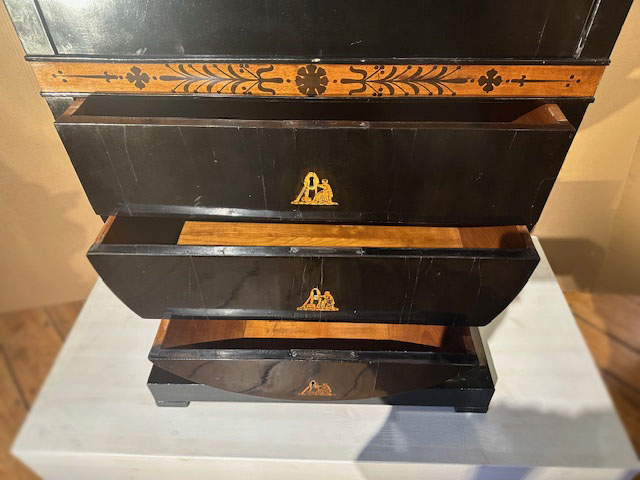
| Back | Next post |

